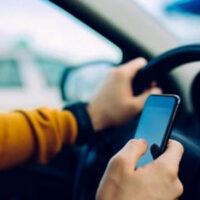What Type Of Evidence Can Prove Distracted Driving?

When a distracted motorist causes a collision in Shreveport that results in serious injuries, you may be concerned that it will be difficult to prove negligence. Unlike drunk driving crashes where an intoxicated motorist might be required to take a breathalyzer test, there is no test like a breathalyzer to prove distracted driving. Given that distracted driving might not always be obvious, data from the National Safety Council (NSC) suggests that distracted driving wrecks are underreported or undercounted. However, it is important to know that there are ways of identifying distracted driving and proving that a distracted driver was responsible for the crash in which you were injured. Our Shreveport distracted driving attorneys can provide you with more information.
Know How to Seek Evidence to Prove Distracted Driving
Although distracted driving cannot be measured with a device like a breathalyzer for DWIs, there are certainly ways to identify distracted driving and to gather evidence to prove that a distracted motorist caused your injuries. A report from the National Highway Traffic Safety Administration (NHTSA) explains that proving distracted driving often requires one or more of the following actions:
- Determine what kinds of activities the motorist was engaged in while driving;
- Obtaining proof of the motorist’s in-vehicle activities through witness statements;
- Obtaining proof of the motorist’s in-vehicle activities through forensics; and
- Recognizing that distractions take many forms, and that a driver can be distracted even when it appears that they are looking at the road in front of them.
Your lawyer will be able to serve an important role in seeking evidence to prove distracted driving, including speaking with potential witnesses and obtaining data from the distracted driver’s cell phone and built-in GPS or other built-in media. It will be important for witnesses to understand that distractions can be visual (meaning the driver has taken their eyes off the road), manual (taking their hands off the wheel), and cognitive (taking their mind off the focus of driving safely).
Common Indicators of Distracted Driving
Aside from obvious indicators of distracted driving such as witnessing a motorist talking on a hand-held phone or looking down at a phone to send or read a text, what are some other common indicators of distracted driving? The NHTSA specifically cites all of the following as indicators that witnesses might recall seeing, and which could support your distracted driving claim:
- Nearly striking an object or vehicle;
- Failure to safely maintain lane control;
- Driving into opposing or crossing traffic;
- Slow response to traffic signals;
- Turning abruptly or illegally;
- Failure to maintain consistent speed;
- Failure to signal;
- Intermittently looking down;
- Night time glow of the device; and
- Hand to ear with device in hand.
In citing those particular indicators above verbatim, the NHTSA underscores that the list is “not intended to be all-inclusive,” and that there are many other potential indicators of distracted driving that a law enforcement official might identify in a police report or that a witness might recall.
Contact a Distracted Driving Collision Lawyer in Shreveport
At Rice & Kendig, LLC, our Shreveport distracted driving attorneys will obtain any relevant police reports for your case and will discuss options with you for obtaining other evidence in support of your case. Do not hesitate to get in touch with our firm to find out more about seeking compensation.
Sources:
nsc.org/road/safety-topics/distracted-driving/crash-report
nhtsa.gov/document/investigation-and-prosecution-distracted-driving-cases
